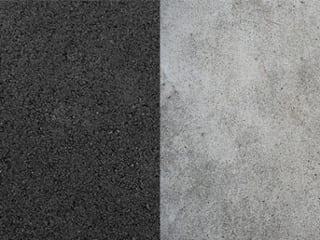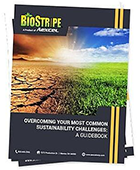What’s More Sustainable: Asphalt or Concrete?
The quick answer to this question is that neither asphalt nor concrete is sustainable. However, there has been some progress by the paving industry to reduce some of the negative environmental impacts caused by these products. Efforts involve reusing and recycling existing materials and creating products from renewable materials that minimize new infrastructure’s impact on our air and water supplies.
Roads, bridges, sidewalks, and parking lots blanket the Earth and will continually be rebuilt or repaved to accommodate our growing population. Despite worldwide efforts in building a more sustainable future, our paved surfaces will continue to be built with these relatively unsustainable materials until a practical, effective sustainable alternative enters the marketplace.
Sustainability Challenges
Sustainability means managing our planet’s resources so that future generations will have sufficient resources to maintain a quality of life. Earth’s resources are finite. Polluting air and water supplies while depleting nonrenewable fuels and minerals is not clearly not sustainable. However, this is exactly what happens during asphalt and concrete production. In the United States, 93% of roads, highways, and parking lots are produced from asphalt, and concrete is used extensively for building construction.
Sourcing Raw Materials and Energy Usage
Both asphalt and concrete consist of materials that require massive amounts of energy to drill and mine. The process of cultivating these raw materials results in massive environmental degradation, polluting the atmosphere and nearby streams while depleting energy resources. Some waterways require several years to recover following the drilling and mining. Moreover, we’re continually reminded of the disastrous leaks that have occurred during the drilling and transportation of petroleum—asphalt’s principal workhorse ingredient.
Water Supply Issues
Both concrete and asphalt roadways and parking lots restrict rainwater from flowing naturally through rocks and soils and into streams and rivers. The problem with paved surfaces is that water is redirected into elaborate drainage systems where it mixes with municipal sewage. This process diminishes water purity and can potentially overwhelm public water treatment systems.
Volatile Organic Compound (VOC) Emissions
High-VOC materials release dangerous amounts of harmful gases during processing and curing. These gases are harmful to the atmosphere and dangerous to humans. Asphalt manufacturing and paving processes emit high concentrations of VOCs. Similarly, cement production requires significant amounts of energy and emits large volumes of VOCs into the atmosphere. Another notable, but solvable, problem is the striping paint used to make the lines and markings on roads and parking lots. Many traditional, high performance marking paints release significant VOC emissions into the air.
Developing Solutions
Improvement 1. Recycle and Reuse
The asphalt and concrete industries are developing ways to reduce emissions during processing by reusing existing materials. During resurfacing projects, asphalt is being stripped from the roadbed, mixed with virgin materials, and re-laid as new pavement. The concrete industry has also worked on a process that involves grinding used concrete and integrating it into new material. Recycling and reusing will reduce materials also reduces VOC emissions associated with processing and paving asphalt and concrete.

Improvement 2: Water Supply
Another potential breakthrough is the development of porous asphalt and concrete. In various tests, the permeable materials are proving to be sufficiently durable to accommodate vehicle traffic while allowing water to pass naturally into the soil beneath them rather than filtering through the public water treatment system.
Improvement 3: Soy-Based Marking Paints
As for striping paints, one company, BioStripe®, has created a soybean-based paint that is long-lasting, economical, and low-VOC. These striping paints, utilizing renewable soybean oil in their workhorse resin, are far more sustainable than alternatives on the market.
Do you think asphalt or concrete is more sustainable? Share your thoughts in the comments!
Are you looking to resurface your driveway with an eco-friendly product? Learn more about the safer way to rejuvenate & seal your driveway, BioSealSafe™.


